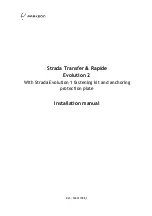
o
A feature of wide-angle lenses is their
extended "depth -of-field, useful in
landscape work especially but a possible
disadvantage when it comes to
ascertaining correct focus (e.g. the
microprism spot in the Zenith TTL
viewfinder may not disappear entirely).
Focusing is often easier if you first set the
lens to its minimum distance setting, then
raise the camera to your eye and turn the
focusing ring as quickly as possible until
the image appears sharpest. (If you start
with the lens at or close to the correct
focusing distance, or hold the camera to
your eye for a long time, it will probably
be more difficult to distinguish point of
sharpest focus.)
Telephoto Lenses are available in focal lengths from 85mm (1 .5 x magnification compared to standard
lens) to about 1000mm. A 1 35mm lens is generally found to be most useful, certainly for candid
photography (children at play, people strolling, street buskers etc), as in most cases you'll find you get a
large enough image on the film, and, because you're further away than normal, more pleasing
perspective and some beautifully relaxed and natural expressions. For longer range work (e.g. stadium
sports, animals) a 200mm or even a 300mm lens could be a useful addition.
o
Remember that telephotos magnify not only the image but also any camera or subject movement
correspondingly, so (a) always use the fastest possible shutter speed (as a general guide a
minimum speed roughly equivalent to the lens's focal length -- e.g. 1/1 25th sec for a 1 35mm
lens) and (b) if you're without a tripod try to find ways of bracing yourself to hold the camera
extra-steady during exposure (e.g. stand with your body firm against a wall or rest both elbows
on the top post of a fence). Wherever you are, try to find a position that gives camera and lens
the best possible support; this slight additional effort will pay off in sharper clearer telephoto
pictures.
Teleconverters will give you a telephoto effect from any lens fitted to your camera at far less expense
than a specialist lens and often with much less total weight (a great boon on a photo-safari). Two Helios
Automatic models (detailed on p. 40) are available, which, when fitted between camera body and lens,
either double or treble the focal length of that lens. Say for example you have your standard lens plus a 1
35mm lens -- with the 2x converter you would convert these to lenses of 11 6mm and 270mm focal
length respectively; with the 3x converter they would become 1 74mm and 405mm. Teleconverters give
you almost unlimited scope -- and you gain in focusing range, since the minimum focusing distance of
your prime lens is not affected by the converter.





































